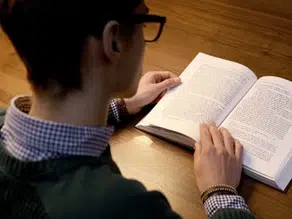Updated: Feb 9
There are six different types of questions that you will be faced with when tackling the reading comprehension section of the GMAT. Below I have listed all six question types, the strategies to tackle them, and the question stems that will help you identify each type of question when on the exam. Specifically, there are three types of questions that you should always begin brainstorming as you read, and then there are three types of questions that you should only think about if a question asks about them.
Types of questions to think about while you read:
1) Main Ide
2) Logical Structure
3) Author’s Tone/Viewpoint
Types of Questions to think about only when they arise:
1) Details
2) Inference
3) Out of Context
Main Idea:
Tip & Trick: Make sure your answer matches what is said throughout the ENTIRE passage. It is not the correct answer if it was only mentioned in one sentence or paragraph.
Tip & Trick: The main idea is often mentioned in the topic sentence and the conclusion sentence. Therefore, look at these two lines to get a better idea of what the passage is about.
The question stems look like the following:
What is the main idea of the passage?
What is the primary purpose of the passage?
What is the passage mainly concerned with?
What would be the best title for this passage?
Which of the following most completely and accurately describes the passage?
Logical Structure:
Tip & Trick: While tackling this question type, a strategy is to locate “logical direction” words such as “moreover”, “although”, “ironically”, “but”, “first” “lastly” etc. to show the road map of the essay.
Tip & Trick: Make sure to look at EVERY word in the answer. This means that if an answer states “Contrasting the point of view that Mr. Dumphy explained”, you need to ask yourself the following questions: “is the author contrasting?”, “is it the point of view that Mr. Dumphy noted, or is it a point of view that another researcher?”, “did he explain it or did he just mention it?”, etc. Be critical about every word in each answer choice.
The question stems will look like the following:
How a passage is constructed – ie. does it define, compare or contrast, present a new idea, or refute an idea?
Which of the following best describes the relation of the third paragraph to the passage as a whole?
Author’s Tone/Viewpoint:
Tip & Trick: Keep in mind that the GMAT is tricky with the tone/viewpoint. Meaning, the authors will be moderate and nuanced. For example, an author who states something is “promising” is enthusiastic about it. Additionally, an author who deems something “less than satisfactory” is completely against it.
The question stems will look like the following:
What is the author’s tone?
What is the author’s viewpoint?
Would the author agree with X?
Details:
Tip & Trick: Most of the time this style of question will say, “based on the passage” and this is a great indicator to look back at the passage. There will be a direct line reference that answers your question.
The question stems will look like the following:
The role of the second paragraph is …
The author mentioned X in order to …
Inference:
This style of question is NOT an assumption. An assumption is something that we presuppose and it can be different for each individual while inference is a conclusion you draw depending on your observations. The main difference is that assumptions are made without any evidence or facts, while inferences are based on facts and evidence.
Tip & Trick: A correct implication is something that was not explicitly stated but must be true. Example: If the passage stated “Joe has been to every state at least once”, then it is logical to infer that Joe has been to New Jersey even though the passage didn’t directly state that.
Tip & Trick: Just like the detail question, this style of question will often start with “based on the passage,” which indicates finding a direct line reference.
The question stems will look like the following:
Based on the information given in the passage, it can be reasonably inferred that?
The author of the passage would be most likely to agree with which of the following statements?
Out of Context:
This style of question is often rare on the exam, but it is still a possibility. Out-of-context questions will have you compare an idea in the passage to a new idea or a hypothetical scenario that is irrelevant to the passage.
Tip & Trick: Try to figure out the core bones of the text. Relate those general concepts to a new concept in the answer choices.
The question stems will look like the following:
The situation described in line X is most like …
How would the author of the passage most likely respond to the assertion that…




